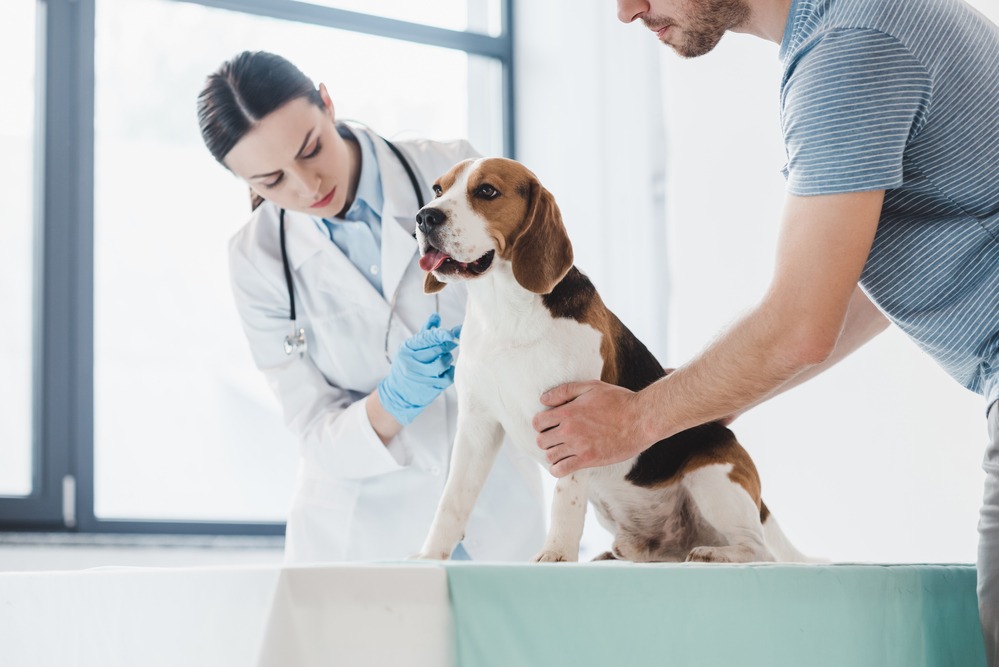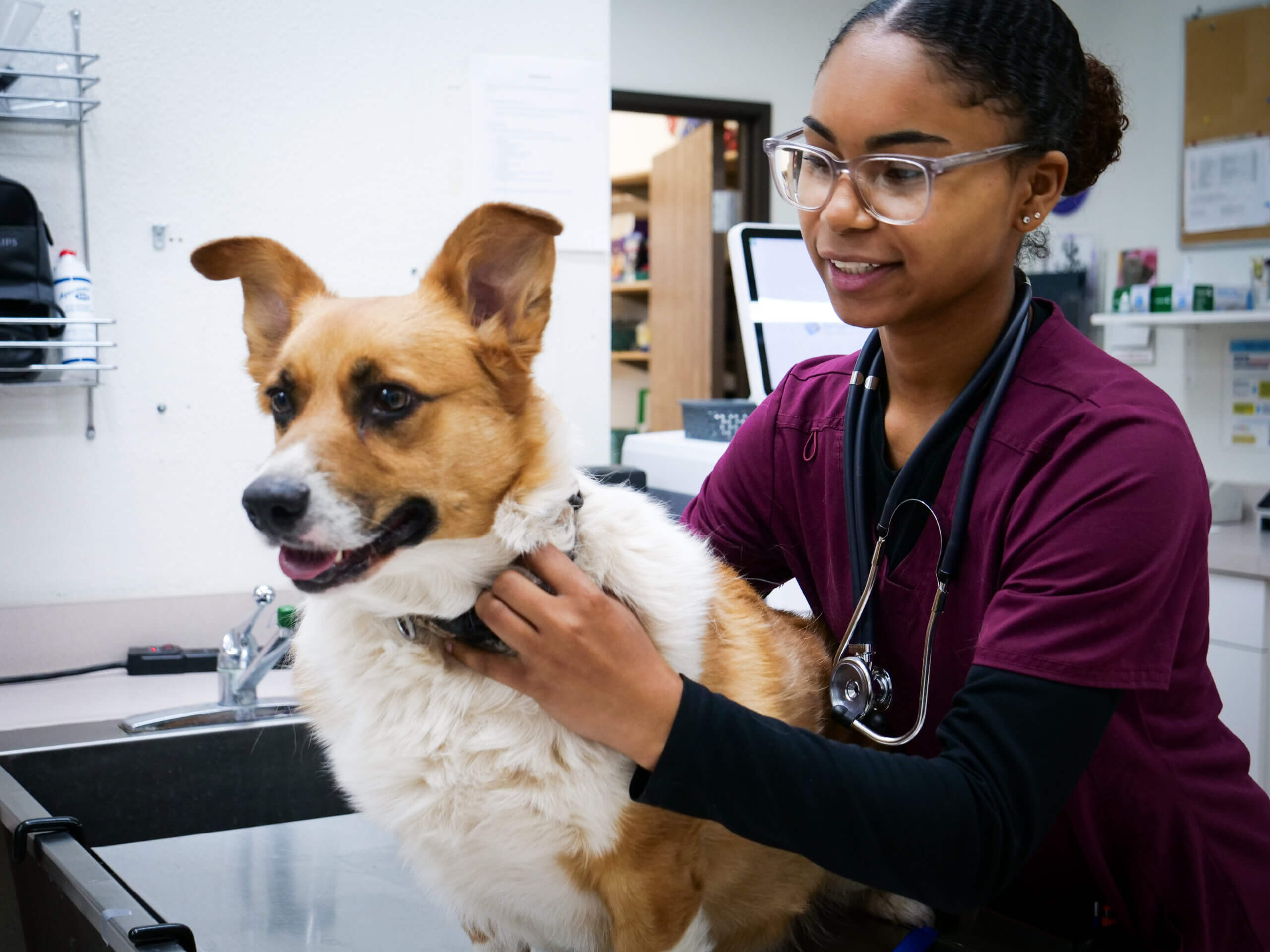When Your Pup Needs Help: What to Expect With tplo surgery for dogs
Why Animal Rehabilitation Is Essential: the Advantages of Veterinarian Services for Your Family pet's Healing
Pet rehab is an important element of recuperation for pet dogs encountering injuries or impairments. Vet services give crucial support with customized rehab plans that resolve private needs. These strategies frequently include discomfort administration, physical treatment, and dietary advice. Recognizing the different facets of animal rehab can illuminate its relevance in improving recuperation results. What particular advantages do these services offer, and how can they change a pet's recovery trip?
Recognizing Pet Recovery
Animal recovery incorporates a variety of restorative practices focused on recovering the health and wellness and capability of damaged or impaired animals. This area integrates various techniques, including physical therapy, hydrotherapy, and occupational treatment, customized to fulfill the particular demands of each pet. Rehabilitation professionals assess an animal's problem, establishing customized therapy strategies that might involve workouts to enhance muscle mass, boost flexibility, and enhance total well-being. The procedure not just concentrates on physical recuperation however likewise addresses psychological and behavior aspects. Pets frequently experience tension and anxiety following an injury, making psychological health and wellness considerations important in rehabilitation. By producing a helpful environment, therapists can assist animals regain their self-confidence and adjust to their brand-new situations. Through regular sessions, pets can experience substantial renovations, ultimately leading to a much better quality of life. In general, recognizing pet recovery highlights its value in advertising healing and improving the bond in between pets and their proprietors.
The Role of Discomfort Administration in Recuperation
Just how crucial is efficient pain monitoring in the recovery of damaged pets? It plays a vital role in promoting healing and boosting the overall well-being of pet dogs. Correct discomfort monitoring not only minimizes discomfort however also promotes movement, enabling animals to take part in rehabilitation activities required for healing. When discomfort is properly managed, animals often tend to react positively to therapy, resulting in quicker rehab outcomes.Veterinarians make use of different techniques to evaluate and attend to discomfort, consisting of drugs, acupuncture, and alternate therapies. By customizing discomfort management strategies to the private demands of each pet, veterinarians can ensure that pet dogs stay calm and participating throughout their healing journey. In addition, minimizing discomfort helps in reducing anxiety, which can hinder healing and extend recuperation times. To summarize, effective pain management is crucial for boosting the healing process and boosting the lifestyle for injured pets.
Physical Therapy Methods for Animals
Numerous physical treatment methods are readily available to assist in the rehab of pet dogs recouping from injuries or surgeries (24 hour vet bellingham). These methods can improve movement, ease pain, and advertise healing. Restorative workouts, for example, help enhance muscle mass and enhance joint feature, allowing pet dogs to regain their physical capabilities slowly. Hand-operated therapy, which includes massage and mobilization, can minimize stress and boost blood circulation, adding to a quicker recovery.Other techniques such as passive variety of movement exercises motivate joint adaptability and decrease rigidity. In addition, electrical excitement treatment may be employed to boost nerves and muscular tissues, advertising recovery and discomfort relief.Veterinary experts typically tailor these methods per pet's certain needs, making sure a thorough rehabilitation strategy. By executing these physical treatment approaches, family pets can experience better top quality of life and a much more successful recovery from their ailments. The combination of these methods right into recovery programs is essential for excellent healing outcomes
Advantages of Hydrotherapy for Rehab
Hydrotherapy offers significant advantages in animal rehabilitation, particularly in enhancing movement. This water-based treatment promotes discomfort relief while supplying convenience to injured or recuperating family pets. In addition, it assists in strength-building exercises that add to general physical recovery.
Improved Mobility Enhancement
As animals recoup from injuries or surgeries, boosted mobility typically ends up being a key goal of their recovery. Hydrotherapy acts as a valuable tool in achieving this goal. Through water-based exercises, pets can take part in low-impact movements that facilitate joint movement and reinforce muscle mass without the stress of weight-bearing activities. The buoyancy of water supports their bodies, enabling enhanced series of activity and movement renovation. Additionally, hydrotherapy encourages better balance and sychronisation, which are necessary for bring back regular motion patterns. Regular sessions can bring about significant progress in an animal's physical capacities, ultimately improving their top quality of life. This method not only aids in recovery however additionally promotes a more energetic and fulfilling way of life post-rehabilitation.
Pain Relief and Comfort

Remedy for pain is an essential aspect of pet rehabilitation, and hydrotherapy considerably adds to this procedure. By utilizing water's buoyancy, hydrotherapy minimizes joint anxiety and minimizes pain throughout activity. This therapeutic method offers a relaxing atmosphere where animals can take part in mild workouts without the full weight of their bodies impacting their healing. The warm water boosts blood circulation, promoting healing while also encouraging relaxation. Additionally, hydrotherapy sessions can be tailored to satisfy the details demands of the animal, ensuring excellent convenience. As animals experience reduced discomfort and enhanced comfort degrees, their overall desire to take part in recovery activities often boosts, resulting in a much more efficient recovery journey. Hydrotherapy serves as a critical tool in boosting discomfort relief and convenience throughout rehabilitation.
Strength Structure Exercises
Strength-building workouts play a necessary function in the recovery procedure, with hydrotherapy offering one-of-a-kind advantages. This type of therapy utilizes water resistance to improve muscle toughness without placing too much strain on the joints. The buoyancy of water sustains the pet dog's weight, permitting for safer motion and raised array of motion. In addition, hydrotherapy can boost cardio wellness and advertise general health and fitness, assisting in faster recovery from injuries or surgeries. The regulated environment additionally decreases the threat of reinjury, making it a perfect option for family pets calling for recovery. Normal hydrotherapy sessions can bring about obvious enhancements in wheelchair, toughness, and endurance, inevitably enhancing the pet dog's high quality of life and capability to return to typical activities.
Value of Personalized Rehabilitation Strategies
Customized rehab plans are important for addressing the special needs of each pet, guaranteeing customized treatment methods. These plans permit efficient progression monitoring and required modifications, promoting suitable recovery results. Furthermore, an all natural approach can enhance the general well-being of the pet, promoting a much more thorough recovery experience.
Individualized Therapy Approaches
While lots of rehabilitation programs embrace a one-size-fits-all method, the special demands of each pet require personalized treatment prepare for excellent recovery. Customized rehabilitation plans take into consideration different aspects, including the pet's species, age, case history, and specific injuries or problems. By tailoring treatments, veterinarians can address each pet dog's unique difficulties, maximizing the effectiveness of the rehabilitation process. Embellished plans might include various modalities such as physical treatment, hydrotherapy, and restorative exercises, guaranteeing that the treatment aligns with the pet's abilities and development. Additionally, individualized techniques foster a more powerful bond in between the pet dog and the caregiver, advertising a more interesting and helpful healing atmosphere. Eventually, customized treatment is crucial for accomplishing best possible outcomes in animal recovery.
Progression Tracking and Adjustments

Holistic Recovery Methods
Alternative recovery approaches are essential for reliable animal rehabilitation, as they highlight the relevance of personalized therapy strategies tailored to each animal's details demands. This approach considers the physical, psychological, and environmental aspects influencing recuperation. Customized rehab plans might consist of a mix of physical therapy, dietary therapy, and behavior modifications. By resolving these diverse aspects, veterinarians can enhance the overall well-being of the animal and promote a much faster healing. Such tailored strategies help with a deeper understanding of the family pet's one-of-a-kind difficulties, leading to much more reliable treatments. Ultimately, holistic recovery approaches not only boost physical health but also add to the pet's mental and emotional security, guaranteeing a complete recovery experience.
The Impact of Nutrition on Recovery
Nourishment plays an important role in the recuperation process for rehabilitating pets, usually figuring out the speed and efficiency of healing. A well-balanced diet regimen offers the required nutrients that sustain cells repair work, boost the body immune system, and enhance total vitality. Protein is especially important, as it helps in muscle mass rebuilding and recovery from injuries. Necessary fatty acids, vitamins, and minerals likewise add to decreasing swelling and promoting ideal mobile function.Veterinarians often emphasize the importance of customized nutrition plans, thinking about each pet's particular needs, age, and wellness status. Proper hydration is equally essential, as liquids assist in nutrition absorption and aid in detoxing. By guaranteeing that pets receive proper nutrition, caretakers can considerably boost their possibilities of an effective recovery, causing far better lasting wellness results. Eventually, nutrition acts as a fundamental element in the recovery journey, sustaining pets in restoring stamina and strength post-injury or ailment.
Success Stories: Animals That Prospered After Rehab
Successful rehab tales are plentiful, showcasing the strength of animals that have conquered substantial challenges. Take, for instance, Bella, a gold retriever who experienced serious injuries from an automobile crash. With committed veterinary treatment and a comprehensive rehab program, she restored her wheelchair and went back to her playful self, much to her proprietor's pleasure. Likewise, Max, a senior feline detected with arthritis, experienced exceptional enhancement through a mix of physical treatment and pain monitoring. His newly found agility permitted him to appreciate his preferred sunbathing places once again. Another motivating case is that of Coco, a rescued greyhound that conquered stress and anxiety with therapy and socializing strategies, allowing her to grow in her brand-new home. These success stories exemplify the transformative power of pet rehabilitation, stressing that with the best assistance, animals can not only recuperate but lead meeting lives, improving the bonds they share with their families.
Often Asked Inquiries
How much time Does the Rehab Process Normally Consider Pet Dogs?
The recovery process for pets normally varies based on the injury or problem, varying from a few weeks to several months. Individual development, therapy type, and commitment to exercises substantially affect the general duration of recuperation.
Exist Any Type Of Risks Related To Animal Rehabilitation?
Animal recovery might lug dangers such as exacerbation of injuries, improper techniques bring about discomfort, or not enough surveillance during healing. These aspects can impede progress and impact the total performance of the rehabilitation procedure.

Can All Pets Advantage From Rehabilitation Services?
Not all animals may require rehab, but several can benefit substantially. Recovery services can improve mobility, relieve discomfort, and improve total health, specifically for those recovering from injuries, surgical treatments, or persistent conditions.
Just How Can I Prepare My Pet Dog for Recovery Procedure?

What Indications Indicate My Pet Dog Requirements Rehabilitation?
Signs suggesting an animal might need rehabilitation include difficulty walking, hopping, decreased task degrees, hesitation to jump, or indications of pain. Observing these behaviors can trigger proprietors to look for expert examination and therapy for their family pets.